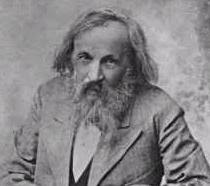.
 Rutherford, Ernest, 1st Baron Rutherford of Nelson and Cambridge (1871-1937), British physicist, who became a Nobel laureate for his pioneering work in nuclear physics and for his theory of the structure of the atom.
Rutherford, Ernest, 1st Baron Rutherford of Nelson and Cambridge (1871-1937), British physicist, who became a Nobel laureate for his pioneering work in nuclear physics and for his theory of the structure of the atom.Rutherford was born in Nelson, New Zealand, and educated at the University of New Zealand and the University of Cambridge. He was professor of physics at McGill University in Montréal, Québec, Canada, from 1898 to 1907 and at the University of Manchester in England during the following 12 years. After 1919 he was professor of experimental physics and director of the Cavendish Laboratory at the University of Cambridge and also held a professorship, after 1920, at the Royal Institution of Great Britain in London.
Rutherford was one of the first and most important researchers in nuclear physics. Soon after the discovery of radioactivity in 1896 by the French physicist Antoine Henri Becquerel, Rutherford identified the three main components of radiation and named them alpha, beta, and gamma rays. He also showed that alpha particles are helium nuclei. His study of radiation led to his formulation of a theory of atomic structure, which was the first to describe the atom as a dense nucleus about which electrons circulate in orbits.
In 1919 Rutherford conducted an important experiment in nuclear physics when he bombarded nitrogen gas with alpha particles and obtained atoms of an oxygen isotope and protons. This transmutation of nitrogen into oxygen was the first artificially induced nuclear reaction. It inspired the intensive research of later scientists on other nuclear transformations and on the nature and properties of radiation. Rutherford and the British physicist Frederick Soddy developed the explanation of radioactivity that scientists accept today. The rutherford, a unit of radioactivity, was named in his honor.


